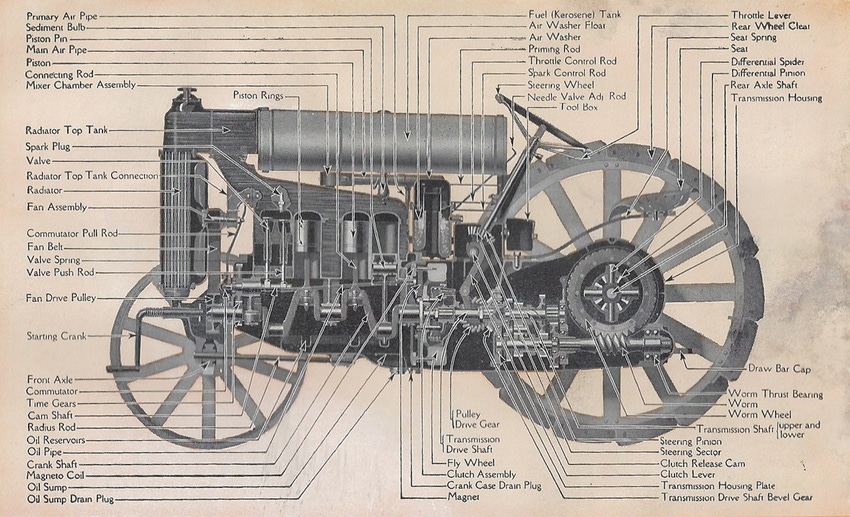June 14, 2018

Henry Ford sold Fordson tractors as cheap as possible. And no, they were never so cheap you could “Buy a manual, get the Fordson free.” But if you wanted a tractor, the price was hard to beat.
So was the amount of information packed into each Fordson manual. We found a Fordson booklet that posed no fewer than 115 questions about operating the little tractor. And it answered every single one! Whether or not you could still start and drive the tractor after reading all 115 answers depended upon having strong arms to crank and steer as much as the mechanical process.
Sample questions
We won’t subject you to all 115 questions and answers. Instead, here are five we found unusually interesting:
What must be done before starting the tractor? Before starting the tractor, the instructions given below must be followed: 1) Fill the radiator with clean water; 2) Fill the crank case to the proper level with heavy, high-grade motor oil; 3) Fill the transmission housing to the proper level with heavy fluid gear oil; 4) Fill the kerosene tank nearly full; 5) Fill the gasoline tank nearly full; 6) Fill the air washer with clean water. (Answer No. 1)
What about the motor oiling system? See that a supply of heavy, high-grade motor oil is poured into the crank case through the strainer in the breather pipe at the left-hand side of the motor. At the side of the motor you will find two small pet cocks. Pour oil in slowly until it runs out the upper cock. This will take about 2.5 gallons of oil. Leave the cock open until oil stops running, then close it. Pre-heating the oil in cold weather facilitates pouring. When the tractor is being worked continuously, oil should be added twice a day. Under no circumstances should it be allowed to get below the lower cock. (Answer No. 3)
How is the motor cranked? By lifting the starting crank at the front of the tractor. Take hold of the handle and push firmly towards the motor until you feel the pin engage in the crank rachet, then lift upwards with a quick swing. With a little experience this operation will soon become an easy matter. Don’t, as a usual thing, crank downward against the compression — for then an explosion may drive the handle vigorously backward. This does not mean, however, that it’s not advisable when the tractor is hard to start, to occasionally “spin” the motor by the use of the starting handle — but be sure the spark lever is retarded down when spinning or cranking the motor against compression; otherwise a sudden backfire may injure the arm of the operator. When cranking the motor, the priming valve on top of the vaporizer should be almost closed. This is done by pulling out the priming rod on the right-hand side of the dash. [When] motor commences to fire regularly, the priming rod should be pushed back all the way. (Answer No. 11)
Is it advisable for tractor drivers to make their own adjustments? The tractor being of simple construction and very accessible, most of the adjustments the driver will soon learn to make for himself. In making any extensive repairs … employ the services of a skilled mechanic.” (Answer No. 21)
What are the causes of overheating? The tractor may be overheated by 1) carbonized cylinders; 2) spark retarded too far, causing late ignition; 3) poor ignition; 4) not enough or poor-grade oil; 5) racing motor; 6) improper vaporizer adjustment; 7) fan not working properly on account of broken or slipping belt; 8) improper circulation of water due to clogging of radiator tubes or low water level. (Answer No. 46)
That’s only five of 115 answers. Maybe it’s not so hard to understand why it took more than 20 years for tractors to replace horses!
Comments? Email [email protected].
You May Also Like




